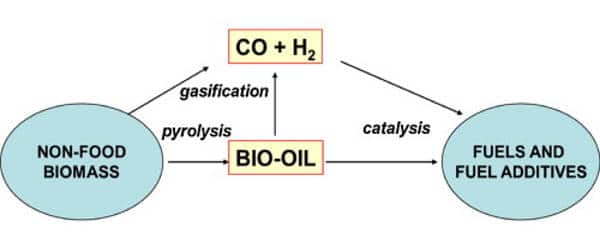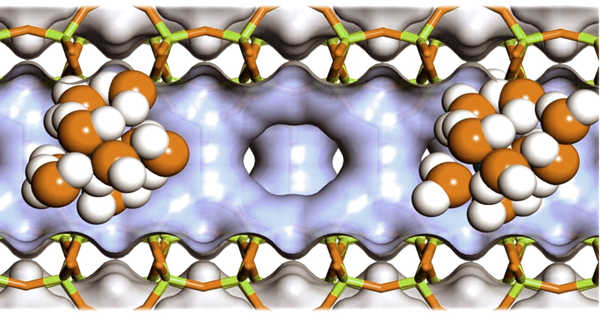Zeolites are extremely porous materials with an internal surface area the size of a soccer field in ten grams. Because of their cavities, they can catalyze chemical reactions and thus save energy. An international research team has now discovered new information about the role of water molecules in these processes. The conversion of biomass into biofuel is an important application. Although biomass fuel is considered climate-neutral, it still requires energy to produce: The desired chemical reactions necessitate high temperatures and pressures.
“If we are to avoid using fossil fuels in the future and make efficient large-scale use of biomass, we must also find ways to reduce the energy required for processing the biomass,” says Johannes Lercher, professor of Chemical Technology at the Technical University of Munich (TUM) and Director of the Institute for Integrated Catalysis at the Pacific Northwest National Laboratory (USA).
Working together with an international research team, Lercher has taken a closer look at the role of water molecules in reactions inside the zeolite’s pores, which are less than one nanometer in size.
Catalytic reactors are commonly used for biomass conversion in the presence of a catalyst, and they have potential advantages over conventional reactors used for biomass processing. These catalytic reactors are classified according to reactor size, charging and discharging method, hydrodynamics of catalyst particles, and biomass.
It all starts with acids
Acid has the property of easily donating protons. When hydrochloric acid is added to water, it splits into negatively charged chloride anions, similar to those found in table salt crystals, and positively charged protons that attach to the water molecules. This produces a positively charged hydronium ion, which seeks to pass on this proton to another molecule, such as an organic molecule.
When a proton is “forced” into an organic molecule, it attempts to stabilize itself. As a result, alcohol can produce a molecule with a double bond, which is a common reaction step on the path from biomass to biofuel. The zeolite walls help to stabilize transitional states that occur during conversion, reducing the amount of energy required for the reaction to occur.

Zeolites acting as acids
Zeolites have oxygen atoms in their crystal structure that already have a proton attached to them. They, like molecular acids, form hydronium ions when they interact with water.
While hydronium ions disperse in water, they remain tightly bound to the zeolite. Chemical pre-treatment can alter the number of these active centers, resulting in a specific density of hydronium ions in the zeolite pores.
The ideal zeolite for every reaction
Biomass conversion is a critical step in the production of biofuel from cellulosic biomass. Biomass conversion is frequently accomplished through biochemical or thermochemical methods, in which the polysaccharides in cellulosic biomass are hydrolyzed by biochemical agents such as cellulase enzyme, or through thermal treatment such as gasification, to produce simple sugars that can be fermented to produce biofuel products.
The research team was able to determine the pore sizes and water concentrations that best catalyzed selected example reactions by systematically varying the size of the cavities, the density of the active sites, and the amount of water.
“In general, increasing the reaction rate is possible by making the pores smaller and increasing the charge density,” Johannes Lercher explains. “This increase, however, has a limit: when things become too crowded and the charges become too close to one another, the reaction rate drops again. This allows us to find the best conditions for each reaction.”
“Zeolites are generally suitable as nanoreactors for all chemical reactions in which the reaction partners fit into the pores and an acid is used as a catalyst,” Lercher emphasizes. “We are at the very beginning of a development that has the potential to increase the reactivity of molecules even at low temperatures, saving significant amounts of energy in the production of fuels or chemicals.”
















